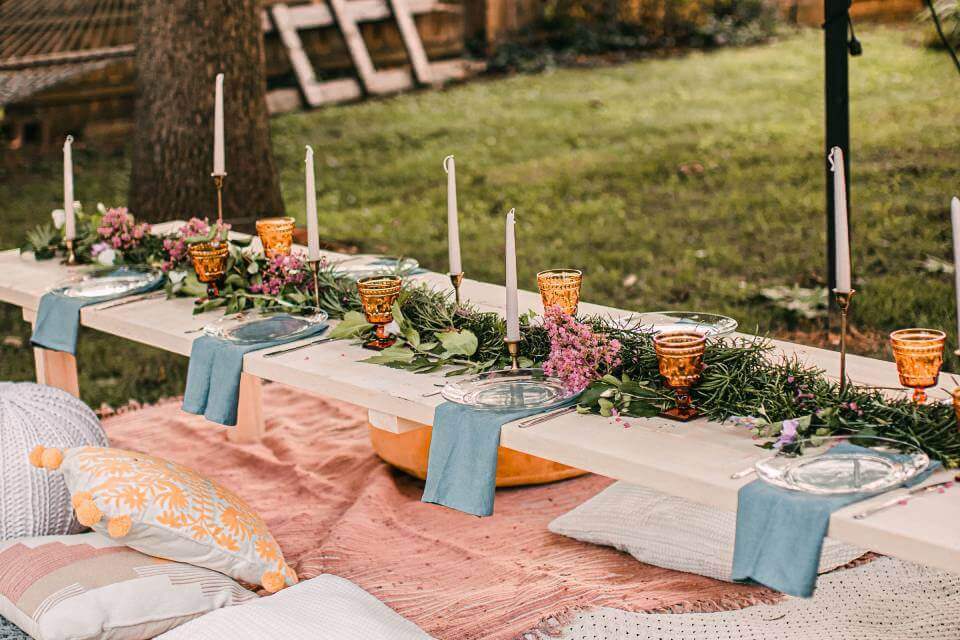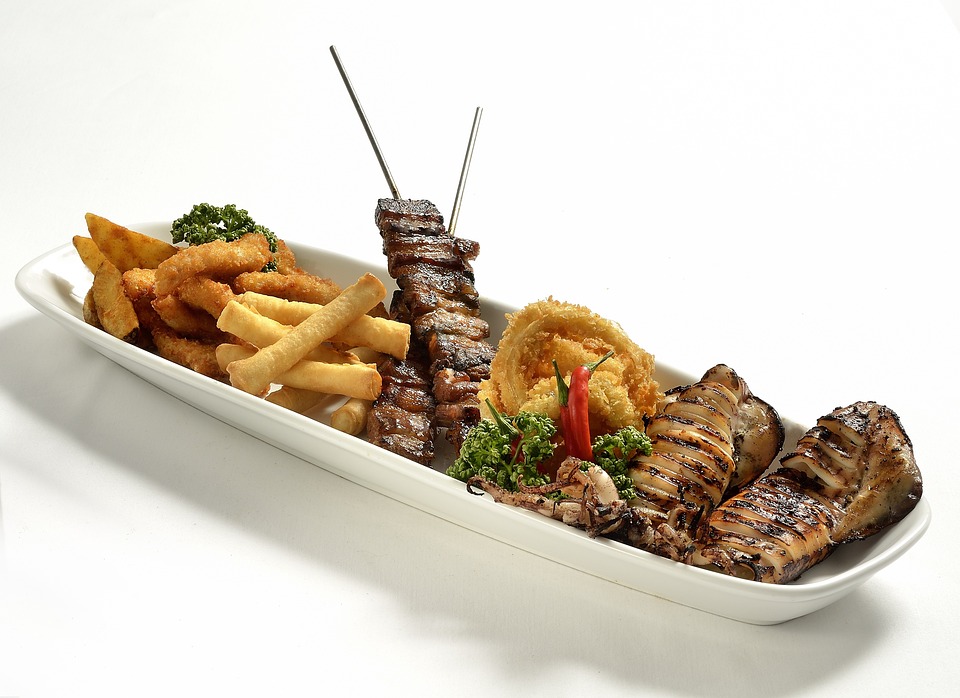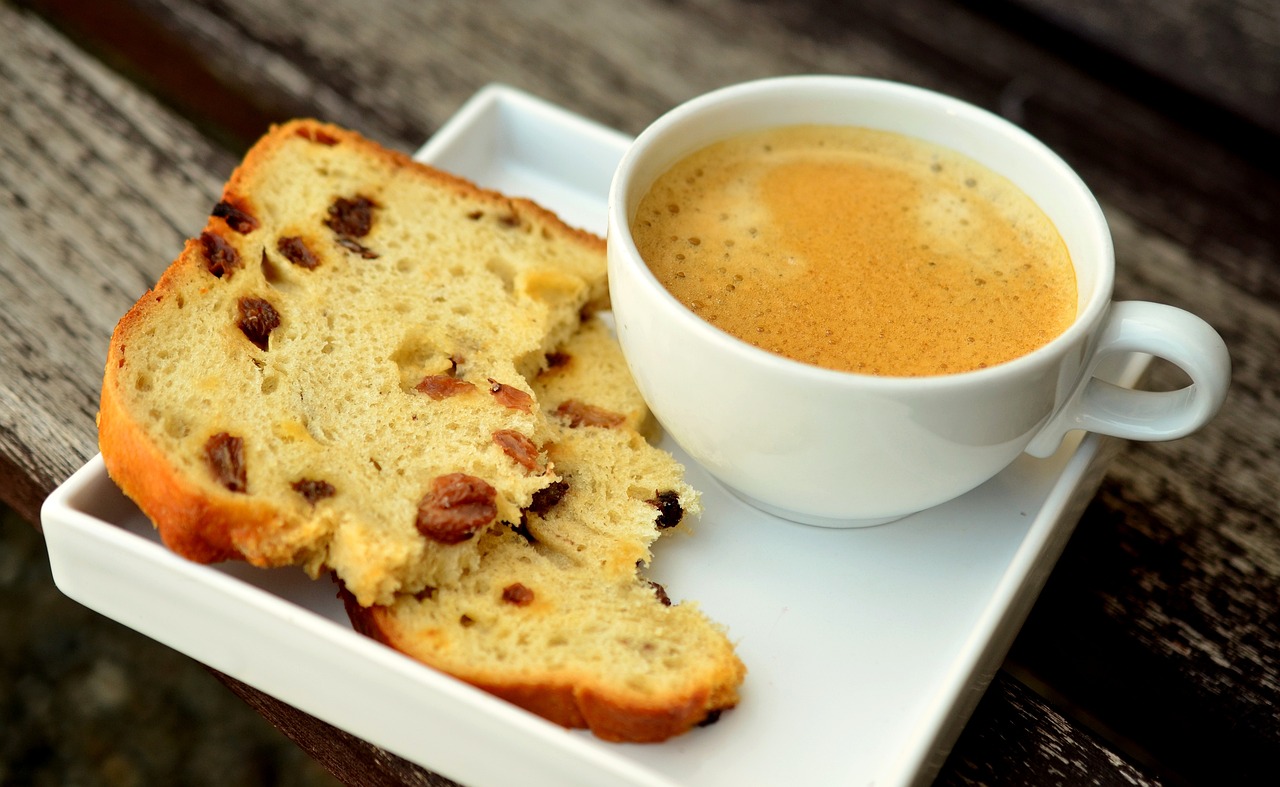Top Food Presentation And Plating Techniques
1. Create height on the plate
Chef Daniel England enjoys creating height when he dishes out food.
He says that it’s crucial to not separate the food when trying to fill the dish. Instead, he recommends building from the bottom. If you need a bit of structure, a ring mold can be used as a starting point. Just pack some food into the mould, and then gently lift it. You now have a foundation to build upon.”
You can also use:
- Use vibrant leaves to create a bed of salads. Use different sized and colored salad leaves like frisee, radicchio and little gem.
- Instead of serving ice-cream and sorbet to the side, place the quenelle atop the dessert. This is what London restaurant Casa Fofo did.
- Big Mamma Group has taken things to the next step with its towering Lemon Meringue Pie. Desserts like pies and profiteroles lend themselves naturally to height.
Leroy uses fruit slices to add height to its desserts. Layer sliced apples, blood oranges, or roasted Rhubarb.
2. Cut meat horizontally
England recommends “fanning”, or spreading out thin slices of meat, to showcase its quality.
He says to slice your meat at a 45 degree angle and against the grain for a tenderer cut. Show off your perfect medium-rare steak!
This technique is equally effective with vegetables and fish. You can also present ingredients horizontally in the following ways:
- Crudo is best served with thin pieces of salmon, tuna and seabass.
- The same technique can also be used for aubergines and carrots. Place grilled asparagus in the middle of a dish and add other ingredients. Slice cauliflower and pan-fry it.
3. Play with textures
Chef Joyce Tang suggests using textures, sauces and foams to make the dish more appealing.
She adds, “I love to use textures that are different on my plate.” Foams can be a great way to add texture and variety to your plate.
Here are a few ideas on how to use sauces and foams with your dish.
- Use a vibrant Vichyssoise to base your fish and meat, just like Llewellyn’s does.
- Serve sweet sauces alongside desserts, taking inspiration from Berber or Q. Customers can eat as much as they want.
4. Use contrasting colours
Tang stresses the importance to play with contrast colours. She uses natural colours, such as matcha or powdered sugar to draw the eye, instead of artificial colors.
She adds, “The presentation of your food is extremely important.” The more you take to present your food, the more visually appealing it will be.
Tanner Agar, owner of Tanner Agar Restaurant, echoes this sentiment.
Agar suggests using vibrant colours to create visually appealing images. The easiest way to introduce colour is by using more colorful ingredients. “Items like carrots and potatoes, as well as cauliflower, lettuce, beans, and other vegetables, come in many beautiful colours,” says he. “The difference that a purple puree of cauliflower makes on a dish is stunning.”
Seasonal ingredients are a great way to add natural colour to dishes. From green asparagus to pink and vibrant red strawberries, you can use them all.
5. Theme your restaurant around the food you serve
Chef Jim Solomon believes that the style of plating must match the atmosphere of the restaurant.
Your guests will expect a rustic, unfussy presentation with a straightforward, hearty flavour. In high-end, trendy restaurants, customers expect to see an artistic touch and care in the preparation of dishes.
Your restaurant’s style should be reflected in the way you present your food.
Solomon says that food should be visually appealing, with a balance of colours and garnishes.
A Michelin-starred fine-dining restaurant might have a more refined presentation style than a pub in the country, which would be more rustic and hearty.
Consistency in your theme and presentation will strengthen your brand.
6. Select the right plates
Michael Welch, a chef at Michael Welch, recommends the use of the correct plate size, color, and style. It is important to consider the colour of your plate, as it will be the canvas on which you present your food.
He says that chefs tend to avoid blue plates because there are no blue foods and they find it unappetizing. If you’re serving something that is very vibrant, it may stand out more on a plate of white.
Jim Solomon emphasizes the importance in choosing the right vessel for your dish. Choose a vessel for the dish that will make it easier for your guests to eat. It is also a chance for your chefs’ to express their personalities in the dishes that they create.
Cubitt House aligns its serveware and furnishings to create consistency throughout the brand. The Big Mamma restaurant is known and loved for its bright, Italian-inspired dishes.
Brat uses oval plates for its sharing style plates of whole grilled salmon and roasted lobster while Osip collaborates with local artists to design exclusive crockery exclusively for its restaurant.
Choose tableware that is in line with your brand and will make your food look the best.
7. Reduce the portion size
Smaller portions are easier to style.
Avoid overcrowding your dishes by limiting them to six ingredients per dish.
As you are often eating between 8 and 12 courses, tasting menus tend to have smaller portions. Osip is a great example of a restaurant that serves beautiful smaller portions. The tiny Somerset restaurant serves the best of the season. Fresh ingredients, such as asparagus, purple daikon or cabbage, are prepared simply so that they can shine.
Take this tip with a grain of salt. If you run a burger joint like The Fat Hippo your USP will be towering burgers. They are served with generous sides and layered with sauces. It makes sense in this case to disregard the motto’ more is more’.
8. Use edible garnishes as decorations
You can use garnishes and decoration to style your dish. However, there are some rules you should follow.
It doesn’t matter what you use, whether it is a spice, a flower, an herb or anything else, it has to be edible. The food on your plate is meant to enhance the taste of the dish first and then the appearance second.
Here are some ways customers use edible decorations and garnishes:
- Osip adds flavour and beauty with small herbs and leaves.
- Pollen Bakery uses edible flowers to colour its frosted cake.
Portland uses seasonal ingredients in its cooking, from pickled blueberries to wafer-thin radish slices.
9. Keep it simple when in doubt
He explains that “overcrowding your plate with unnecessary spices, oils or microgreens takes away from the delicious food you have worked so hard to prepare.” “Subtraction is your best ingredient.”
Let the food speak for itself. Don’t add a million garnishes and swirls of sauce.
Welch says that a properly seared steak, with fresh watercress on top and perfectly roasted potatoes underneath will look more appealing than a fancy plate with subpar cooking. Proper cooking will allow you to create contrast in your ingredients, both with texture and color.
10. You can express yourself in many ways.
It’s not just about the food. The art of plating is where chefs are able to express their creativity and make a big impact on guests’ perceptions.
Poe says that presentation should be treated like cooking, art and music. Take a minute to relax, look at the other people and learn some of their techniques. Then find your own style and voice.
Poe likes to use the Jackson Pollock technique, holding up the plate as if it were a canvas. He then splatters sauce on top. He adds that “other times, we may look at a more linear style which could be Picasso or graffiti street-style.” Sometimes the negative space method might work.
Big Mamma goes OTT and serves its signature carbonara directly from a pecorino wheel. Silo is a zero-waste establishment that makes the most of the negative space. Silo’s zero waste ethos is reflected in this no-fuss style of presentation.



